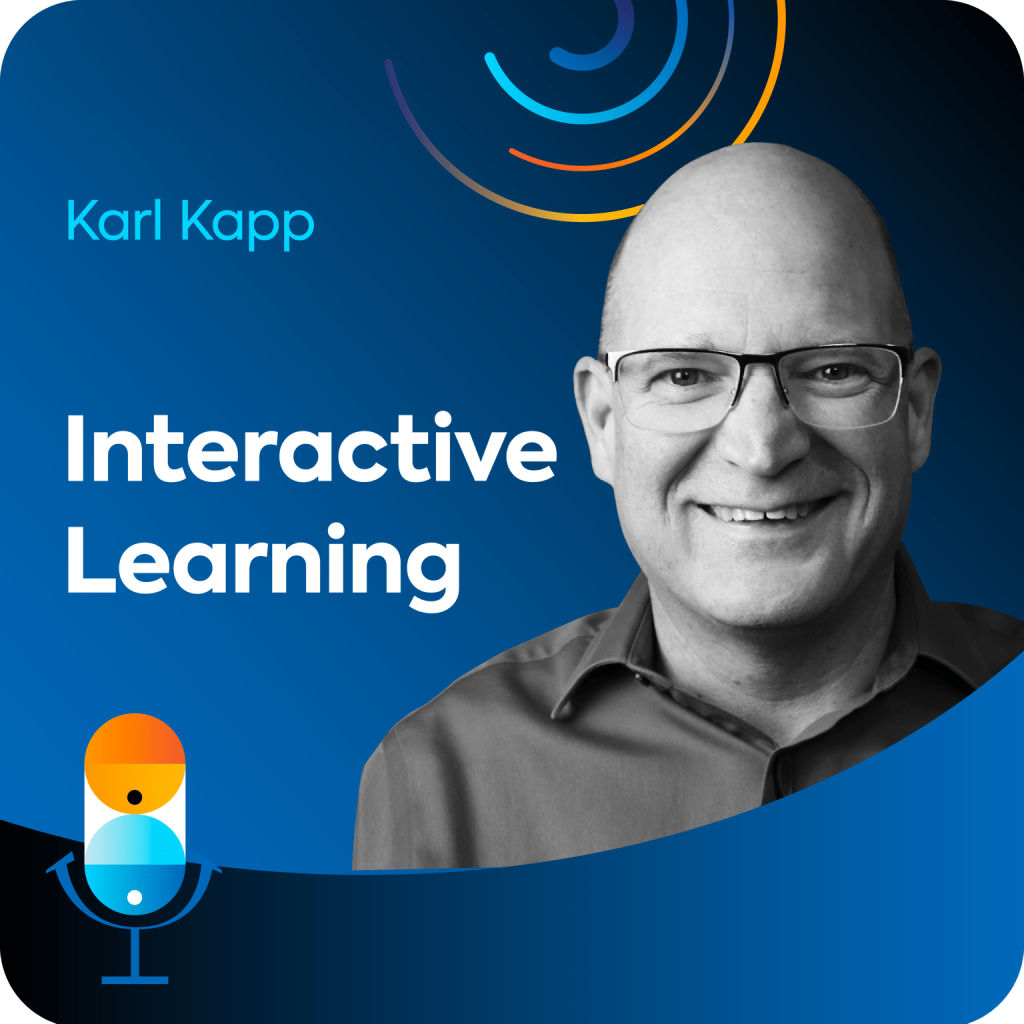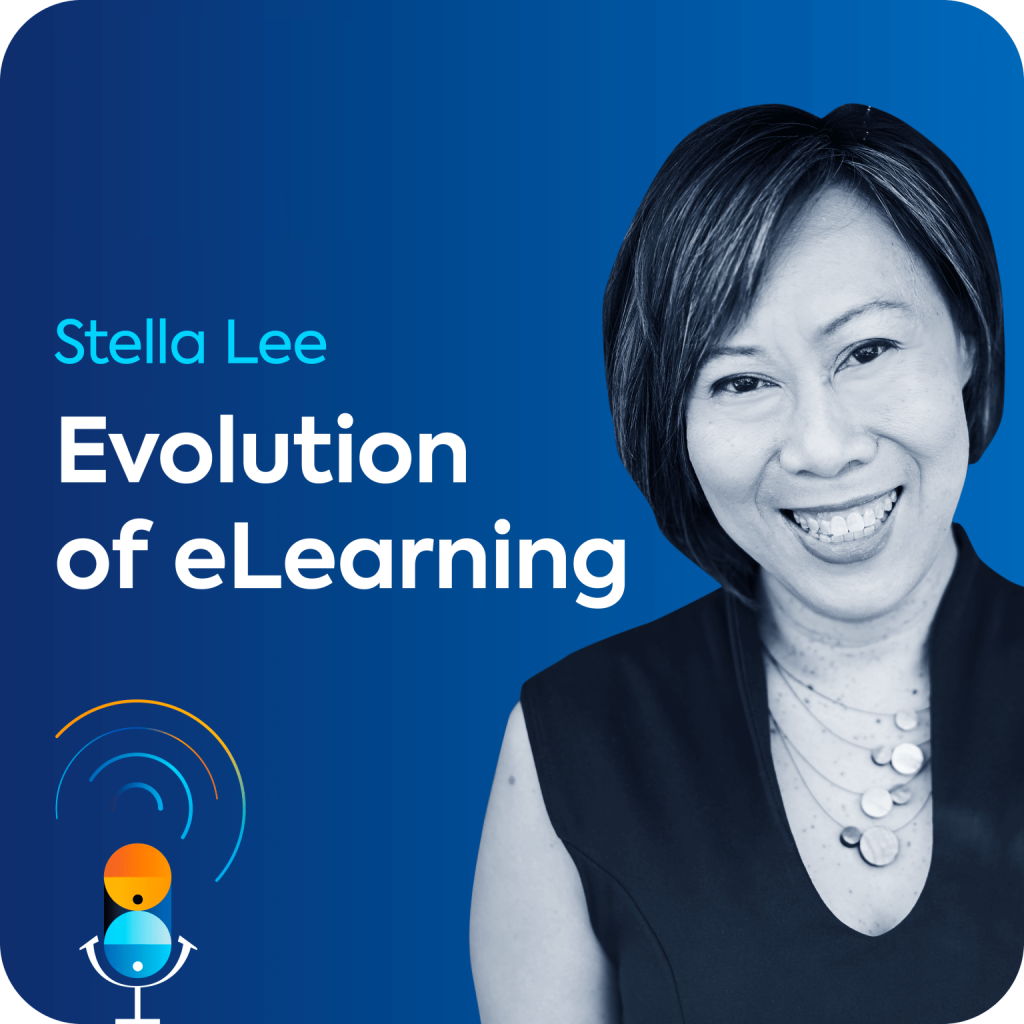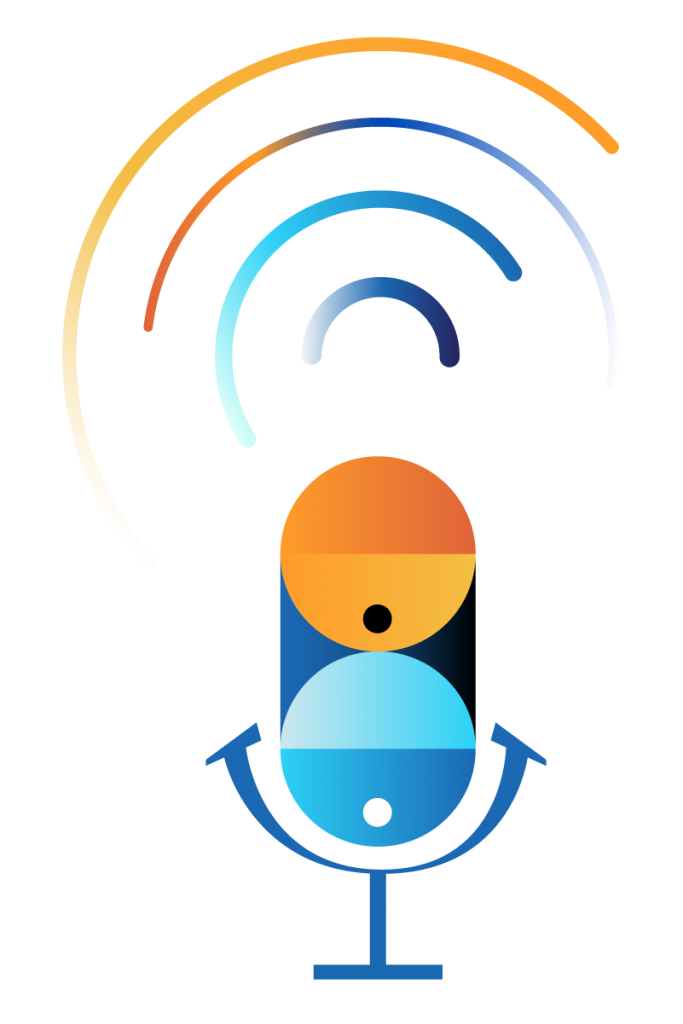Episode 13: Hitting the mark:
How to create top-tier training
Duration: 33min
About our guest:

Heidi Kirby
Dr. Heidi Kirby is L&D Learning Strategy Consultant, co-founder of Useful Stuff, and host of the BLOC Podcast for L&D professionals.
She holds a PHD in instructional design and technology and has consulted with organizations and award-winning L&D entrepreneurs to help them grow and scale.
Share episode
What are the 5 key elements of relevant training? And what’s the 1 training metric that could lose L&D pros their jobs?
In this episode we invite L&D consultant, Instructional Designer, and fellow podcaster, Dr. Heidi Kirby to share her experience and give us actionable advice on course creation. Plus, Heidi reveals why training should be on point, not just on trend, and, surprisingly, why sometimes you don’t need to pencil in a training session at all.
Key takeaways:
Engagement comes from relevance. Training must be relevant and directly applicable to the job. This helps employees understand how it benefits their work and address real-world needs.
There are five key elements for creating training that sticks
-usefulness, appropriate language, opportunities for practice, efficiency, and the element of fun.To boost human skills, such as leadership or communication, add storytelling, case studies, and scenarios into your training courses. These methods are relatable and practical examples that help learners understand and apply the skills in real-world contexts. Also, include both good and bad examples to allow learners to grasp the nuances of these skills and learn from both successes and failures.
Training courses don’t always have to be long and extensive. If a concept can be effectively communicated in a shorter format (i.e., email or brief video), opt for that instead of lengthy training sessions.
Foster an environment where learning is valued and supported. Allow time for learning, use multiple learning channels, and emphasize collaboration and accessibility to make learning engaging and effective.
AI comes in handy for handling routine L&D tasks. For instance, generating narration for course prototypes, writing alt text for images, and creating realistic use cases for training. This way, L&D experts can focus more on designing and developing high-quality content and conducting needs analysis to enhance the learning experience.
More episodes we think you’ll love

October 25, 2023 • 30 min.
•
Learning & Development
Power Up Training with Interactive Content Design
How can we make sure employees are active and engaged during training? It’s time to elevate our learning game. We talk with Karl Kapp, Gamification and Instructional Design expert, professor at Bloomsburg University, and TEDx speaker. Karl reveals the secrets behind crafting effective, meaningful, and interactive content design for businesses big and small.

February 14, 2024 • 34 min.
•
People Management | Learning & Development
Power Skills to Future-proof Your Teams
What are the 3 power skills every professional needs for the future? How do the human skills employees build in their personal lives benefit the workplace? Educational expert and author Dr. Michelle Weise explains how rapid technological innovation is demanding a change in the way we approach learning and work.

July 17, 2024 • 34 min.
•
Learning & Development
Generative AI in L&D and the evolution of eLearning
What does the surge of generative AI mean for the future of L&D? And how will the roles of L&D pros be reimagined in response? Season two of our podcast kicks off with Director of Paradox Learning, AI strategist, and eLearning expert, Stella Lee.

Never miss an episode! Get every new drop right in your inbox
Full Episode Transcript
[00:00:00] Host: Welcome to Keep It Simple, a podcast where we’re challenging business and leadership experts to cut through the noise of the corporate world and get to the bottom of what makes the workplace actually work.
[00:00:28] Keep It Simple is [00:00:30] brought to you by TalentLMS, the training platform built for success, and designed with simplicity in mind. Together, let’s uncomplicate what makes a winning workplace. You can find out more at talentlms.com.
[00:00:48] On today’s episode.
[00:00:50] Heidi Kirby: We’re going to put a game in here just for the sake of gimmicks, right? Like people add these gimmicks. Cartoons, right? Like, Oh, we’re going to make it animated and [00:01:00] make it fun, but they don’t realize that engagement doesn’t come from trying to make it as fun as possible. It comes from making it as relevant as possible.
[00:01:09] Host: How can we design training courses that don’t just go through one year and not the other, but actually stick? I’m speaking to L&D strategist, consultant, and instructional designer. Dr. Heidi Kirby, who’s worked with the likes of NASA and is the host of her very own podcast dedicated to learning and development.
[00:01:28] Together, we’ll [00:01:30] explore how engaging training impacts employer retention, the importance of tailor-made courses for every occasion, and how AI is leveling up the world of instructional design. Stay with us.
[00:01:51] Hi, Heidi. How are you? Thank you so much for being with us today.
[00:01:55] Heidi Kirby: Thanks for having me. I’m good. How are you?
[00:01:57] Host: I’m great. Thanks for asking. [00:02:00] We’re so glad we were able to schedule this time with you. We love your work and we can’t wait to pick your brain on a couple of things. So if you don’t mind, I’d like to just kick off with a bit of a Big question.
[00:02:15] If you had to filter it down to the five key elements needed to create an engaging and memorable training course, what would they be?
[00:02:25] Heidi Kirby: Oh, that’s a great question. So I think like number one is the easiest for [00:02:30] me. The rest of the four are going to be a little bit more difficult, but number one, I think that the usefulness of it.
[00:02:38] is key, right? Because if you think about how we learn outside of work, and we use that for a model for how we learn inside of work, we don’t really learn things unless there’s a reason outside of work, right? So like, for instance, I always use the example of how I fixed my own car. I had to trade in my car after it died [00:03:00] for a 2007 Toyota Corolla.
[00:03:03] And so I had to learn like it had a problem pretty immediately and I had to learn how to fix it. And so I was like watching YouTube videos of just like old guys fixing cars, right? And I never would have watched those otherwise, unless I needed to fix my car. So that usefulness is one of the most engaging things you can do.
[00:03:22] Because if I can see how this applies to my job, and I can understand why it’s important for me to know for my [00:03:30] job, Then I’m going to be engaged from the very beginning. Right. I think the other thing is that it has to be in the right language. Right. A lot of times we get information from our subject matter experts, and we just take it and hand it off.
[00:03:49] Right. But a lot of times our subject matter experts can’t really you know, filter that down into something that’s for that [00:04:00] entry level, that beginning learner. And so I think we need to remember that we need to give it to them in the language that they speak for it to be engaging.
[00:04:08] I think the other thing is that we need to provide opportunities to practice or apply what we’re learning. And a lot of times we talk about interactivity. in eLearning, right? And a lot of times people just put in like a drag and drop or something where it’s just requiring extra clicks. And that’s not really any different than clicking next.
[00:04:29] [00:04:30] But if we do something like have you practice in small groups, I think that can be really beneficial and engaging. The other thing is I think it needs to be, so the shortest possible route for the sake of efficiency, right? So making sure that it is, if it’s Something that they just need to know very quickly, like, let’s not make it an hour long training.
[00:04:52] Let’s send out an email, right? Like, I’m all about, if the training can be an email, make it an email, right? And then [00:05:00] last but certainly not least, I would just say that like, I’m not anti fun, so that there, there can be an element of fun in there too. Like, remember to have some fun with it.
[00:05:09] Host: Do you have any examples of projects you’ve worked on in the past that you can highlight and say, now that was a good call or similarly any not so successful stories where bad decisions were made and the outcome was less engaging?
[00:05:25] Heidi Kirby: Sure. So one of the most recent projects I worked on, I was [00:05:30] tasked with helping the HR team. They’ve been having a lot of trouble with hiring managers following their process to hire new people. And it’s kind of an involved process. They’re hiring people who are dealing with health and mental health. So they’re clinicians and they’re hiring people who are, you know, they have to have certain qualifications.
[00:05:52] There are all sorts of things that have to go into this hiring process. And they wanted to do an hour-long training because they said hiring managers just weren’t getting the process. [00:06:00] When I came in and took a look around, they have all of their info on a SharePoint, right? And so I said, well, maybe instead of a training that you’re going to do at some random point in time that they may or may not be hiring for their team.
[00:06:18] What if we just, fix this SharePoint because the information on the SharePoint was very, it was just walls and walls of text. It wasn’t very clear what the steps were to follow. They’re [00:06:30] like, oh, there’s five easy steps, but there’s five pages with each, with five steps each. And so it’s like this super, super involved process and complex process.
[00:06:39] So I said, what if we just organize this information better and make it look and feel more like a checklist? See if there’s any ways we can automate these processes and then like, we’ll make some short videos to help people along, but we won’t do anything like sit in a room and do training or get on a virtual call and do training like that.
[00:06:57] And I was so lucky that the [00:07:00] people who I was working with were very open to the idea and We’ve just been working on that project, and it’s about to launch soon, and it’s just been so wonderful and amazing to not have to like make people sit through training, but also still make an impact. So it doesn’t always have to be a training solution, and I feel like it’s going to be really well received.
[00:07:21] Just because the subject matter experts we’ve been working with so far, like, Oh my gosh, this is so much easier for us already. We can already see my boss has even [00:07:30] said me as a hiring manager. I already see how this is going to be so much easier for me, too. So it’s been a really, really good and rewarding project to work on.
[00:07:40] But I also worked on a project recently that was quite the opposite, where it was again, another HR team. They were creating training for a new compensation process. So they were using a new compensation model for the HR people, the recruiters, to choose salaries for new hires. And they wanted [00:08:00] to teach people in HR how to use this process.
[00:08:02] They wanted to do a two-hour training. Why was it a two-hour training? I still don’t know the answer to that. You know, sometimes these companies, right, like they’ll pick an arbitrary number and be like, we need a half an hour e learning. And you’re like, why does it have to be half an hour? You know, but it’s just this arbitrary number that was chosen.
[00:08:20] And so I said, well, how about instead of a two-hour training, what we do is we send out a video with like high level, what this new process is. And then we have like an hour long [00:08:30] workshop where we give them actual practice situations where they can practice picking the right salaries based on like a story of, of a candidate.
[00:08:39] Right. And then that way they get the practice, we can make sure that they can do it. And then they can, you know, be let loose. And so initially they were like, yeah, sure. Let’s do it. So, you know, I, I started the work. And then after I’d made the video, they’re like, Hmm, we don’t really want to do this video.
[00:08:55] We want to, but we also don’t want to move the deadline. And the deadline was like a week after, [00:09:00] right. And so they’re like, well, what can we do? I said, well, the only thing you can do at this point is put all the stuff back into the PowerPoint you originally gave me for the two-hour training and run a two-hour training.
[00:09:14] So that’s what they ended up doing. But at that point, I kind of recused myself as a contractor. I was like, Well, I don’t think this relationship is working. So I ended up leaving that client. Because I can’t make somebody sit through a two hour training that could be an email truly. [00:09:30]
[00:09:32] Host: That’s a really good point because the big difference I hear in the two stories you provided, the one where it was successful and the other one where not so much.
[00:09:40] The first company was willing to go through that trial and error process and they were willing to try new things that would work best for their employees and their company. Whereas the second one, not so much.
[00:09:53] Heidi Kirby: Yeah, absolutely.
[00:09:55] Host: I’m really glad you brought up engagement. How do you think this [00:10:00] affects the productivity of a team in the long run?
[00:10:03] Heidi Kirby: I think I kind of hate to use the phrase learning culture, but if you’re consistently engaging employees by giving them what they need when they need it, I think that you create a learning culture and you create a culture where people are open to and seek out the L& D department when they need help with things.
[00:10:28] To consistently [00:10:30] engage your employees means that people are coming to you with work. You never have to worry about job security. The other side of that is when I see people who think they’re being engaging, right? Like we’re going to put a game in here just for the sake of gimmicks, right? Like people add these gimmicks, cartoons, right?
[00:10:48] Like, oh, we’re going to make it animated and make it fun. But they don’t realize that engagement doesn’t come from trying to make it as fun as possible. It comes from making it as relevant as possible and [00:11:00] fun is like an extra to that. Like fun is like the side dish to the main course of engagement and relevancy.
[00:11:09] Because the truth is. If you’re thinking of like gamifying or like adding all these gimmicks, what I want to do as an employee is I want to sign off my computer earlier and go play games with my kid or go play games myself, right? I can do all that outside of work. What I want to do at work is do my job [00:11:30] better.
[00:11:30] Host: Just listening to you then reminds me of something you said in the past. that, um, we get bogged down in seductive details and seemingly fun elements. What would you advise L& D and HR professionals who aren’t trained in instructional design to sort of avoid that fate of falling into that?
[00:11:50] Heidi Kirby: Sure. I think.
[00:11:51] Really doing a good needs analysis because that’s something you can do, whether you have experience or not. Like you have to Google a [00:12:00] framework for it. That’s fine. But just like asking the right questions of okay, someone brings you an issue or a problem in the workplace and they say, Oh, we need a training on X.
[00:12:10] You know, the first question you should ask is, why do you think you need a training on this? And once you start like treating it as kind of like a root cause analysis, if you’re not familiar with needs analysis, like root cause analysis, think of it that way. Like, what is causing this issue? What is the heart of this problem?
[00:12:28] And get to that and [00:12:30] make sure that you don’t just get the opinion of the person bringing it to you, because a lot of times those are one step removed from the problem, right? Like they’re the managers of the people or the directors of the people who are experiencing or where the problem’s happening.
[00:12:44] And so they may not have a clear picture of it. So then you have to actually go and talk to the people who are doing the thing incorrectly or who need improvement. And then you can decide from there, how do we fix this? And. Don’t have a default. [00:13:00] That’s my other thing. Don’t have a default solution for everything.
[00:13:03] Be open to solving the problem with whatever solution is necessary. Don’t just always say like, we’re going to throw eLearning at everything. We’re going to do infographics. I had a boss who used to do this, like she would pick something that was really trendy. And want us to do everything in that style, right?
[00:13:21] Like we need an infographic on this. We need an infographic. And it’s like, sometimes an infographic is not the best choice. So be open to solutions, be [00:13:30] open to different solutions, and be open to asking the questions to get to the problem.
[00:13:36] Host: Perfect
[00:13:37] What would you say are some key differences that we should keep in mind when we’re designing courses that are more focused on human skills rather than technical skills?
[00:13:47] Heidi Kirby: Ooh, that’s a great point. Or a great question. I think I really think that storytelling case studies and scenarios are [00:14:00] huge, huge, huge when we’re talking about human skills, right? Because technical skills, it’s very directional, right? You can say step one, do this, step two, do that. Step three, you can do that with human skills.
[00:14:13] But to be able to emulate those or execute those based on directives is much harder. Like how do you teach someone to be a good leader, right? Sometimes that’s just an inherent skill, but it can [00:14:30] be taught and it can be fostered. But you have to tell stories of what does this look like? in good situations, but also what does it look like in bad?
[00:14:38] Like, what are bad examples, right? We don’t want to just teach good examples because I mean, think about bosses that you’ve had. I’ve always said my bad bosses were better examples to me of how to be a leader than the good ones. Because I remembered more what they kind of put you through, right? So if you give those [00:15:00] examples, you give those, tell those stories, you give those case studies of like what this is, what this looks like, but then also provide that practice and in scenarios, right?
[00:15:10] And it doesn’t have to be this like high production value. Let’s hire actors to act out these scenarios and, you know, make a full interactive e learning where you choose your own adventure. Scenarios can be, you know, like think about choose your own adventure books, text only. They can be [00:15:30] multiple choice questions.
[00:15:31] You can have them where you have your regular assessments. But just build out, you know, a lengthy scenario and have someone choose what to do next. Or another really great thing to do with scenarios is create small cohorts and have people work together. Learning together on human skills is .
[00:15:49] massive solving the problem together that sharing here’s what I would do in this situation. Oh, well, here’s what I would do. Here’s an added tip. Like it just gives you a more well [00:16:00] rounded view and perspective when you get to learn from other people as well.
[00:16:05] Host: We’ll get back to our chat with Heidi in just a sec, but first we wanted to share some of our tips for creating engaging courses
[00:16:13] At Talent LMS. We’re continuously exploring how we can make course creation even easier and more impactful for time poor trainers who want to deliver top notch training that sticks. Before you get started, considering the needs of your audience is key. Are you [00:16:30] training employees, customers, other external partners?
[00:16:33] Getting the tone right and aligning the learning outcomes with their needs can act as a guiding light to what your training is going to look like. Next, explore and test out various formats. While you may want to say a thousand words, sometimes a picture or video will do the job just as well. Studies show that 70 percent of new information is lost in 24 hours when there’s no effort made to retain it.[00:17:00]
[00:17:00] So how you do this is crucial. Tools like flashcards, multiple choice quizzes, even scenario walkthroughs will help learners retain the knowledge they’re gaining. There’s a world of elements to experiment with, and usually, the best approach is a combination. If you’re using Talent LMS, you can also leverage the power of generative AI within the training platform to create entire training units, with a prompt, You can source relevant images, create course [00:17:30] elements like lists, quizzes, or flashcards, and enhance your content in terms of grammar, tone, and length so that your learners have the best possible learning experience.
[00:17:41] Now, I do want us to talk a little bit about AI and course creation and the breakneck pace of the tech that is changing not only L&D but all functions of work and life in general. For L&D professionals listening that are perhaps uncertain about the uses of AI [00:18:00] when it comes to course creation, how do you think the tech can enhance the learning experience?
[00:18:07] Heidi Kirby: Yeah, that’s a great question. And first of all, I’ll say like, I really, really just want to strongly encourage everyone in L& D to keep up with current technological trends, because a lot of us are still using SCORM, which hasn’t been updated since 2004. And. Will keep my opinions about that aside for today, but I’ll [00:18:30] just say we have to keep up with what’s happening and what’s new because we have to be able to use that technology to best serve the organizations and clients that we work for.
[00:18:40] So the ways that I’ve used AI that have been super helpful to me. are things like for narration, for prototypes. We all have been there where it’s like final, final, final, final version eight of whatever course we’re creating. When you’re in the early stages like that, it’s so much [00:19:00] easier to send a prototype to SMEs and stakeholders with AI voiceover.
[00:19:04] Then you can go back when it is final and do it yourself or hire someone to do it. But for those prototypes, it’s really easy. And the voices sound realistic enough these days. That it gives people a better idea of what it’s going to look and feel like, but it’s so much easier to edit than you having to make sure that your dogs in the background are quiet, that you’ve got a quiet environment to re-record and re-record and re-record, because we all know that that’s [00:19:30] going to happen.
[00:19:30] I think another great way to use AI is for accessibility things. There’s AI now that will write alt text for images for you. So that’s saving you that step of having to do those things manually, but also adding an extra layer of checking to make sure that you’re doing things that are inclusive and accessible.
[00:19:51] Another way that I use it a lot is for use cases or fake data. Right. So when I work for clients in the customer [00:20:00] education world, it’s often teaching software. And so we need realistic data that’s realistic enough for the videos that we’re creating, but isn’t real. So it’s very easy to enter into a GPT like, Hey, give me a product, an owner, you know, company, a fake company address, all of these things.
[00:20:20] So I think those are a few of the ways that I can think of off the top of my head. that are just about making it more efficient so that you can do the actual designing of the [00:20:30] deliverables or you can do more of that needs analysis or you can, you know, you can spend more time doing the things that we actually like to do in L& D and leave some of those other tasks for AI.
[00:20:41] Host: I’m really glad that you brought up so many options on how to use it in a way that’s actually helpful. Because research is showing that AI powered learning solutions has resulted in a 20 percent surge in employee engagement and a 15 percent enhancement in knowledge retention across various [00:21:00] organizations.
[00:21:00] And I think that correlates a lot with some of the examples that you gave us. One of the things that AI can help with is personalizing the custom learning pathways. Is this something that you would agree with? And how valuable are custom learning pathways when it comes to engaging learners?
[00:21:20] Heidi Kirby: Oh, I think absolutely.
[00:21:21] I said it before and it’s something I say often is we have to look at how people learn outside of work to best figure out how to reach [00:21:30] them at work. And if you think of AI algorithms, like you think of things like Netflix, YouTube, TikTok, Instagram, what are those things showing you? Like, not only products that, oh, hey, I didn’t know I wanted this product and now I’m going to buy it, right?
[00:21:49] But like Netflix will say, oh, you liked this show. Here’s another show that you’ll like. Why wouldn’t we leverage that in learning too, right? Especially because a lot of companies are buying these large [00:22:00] catalogs of learning, and they’re kind of just like releasing them to their employees with no real direction.
[00:22:07] And they’re like, here you go, here’s all the L&D for this year. And you’re like, wait, like, there’s literally 3000 courses here, where do I even start? So that’s a really good way to be able to do that. Or even just in on a small scale with your own catalog and your own curriculum. If I take this course, and looking at behavior, someone takes this course, and they almost always [00:22:30] take this one next.
[00:22:31] It can not only tell us. How to best serve our employees. But if we look at the data on the back end, too, we can see, Oh, hey, no one’s taking this course. Or if we have some of those like rich video or viewing metrics, we can say, People are stopping five minutes into this video every single time. Maybe it’s not as useful as we thought.
[00:22:52] Maybe we need to go back and see why people are stopping watching this. Maybe it’s that they got what they needed by minute five. [00:23:00] Maybe we just need to cut the rest off, right? So it gives us these really great metrics where we can make learning more efficient and effective. People are taking this course and then this course, and then they’re not taking anything after.
[00:23:12] What do we provide? As that third piece.
[00:23:16] Host: Perfect. Thank you. And now, after all of this, you might create a truly engaging course, but if the learning environment isn’t right, people can still struggle to actually engage. So how can a company foster a physical environment [00:23:30] and an overall mentality that is conducive to effective learning?
[00:23:34] Heidi Kirby: That’s a really great question, and I think that that’s something that if we knew like a hard and fast framework or model for it, like, that’d be like a million dollar thing, but it’s so dependent on so much, right? It’s dependent on the organizational culture overall, because you have to have time to learn and time to collaborate that spirit of [00:24:00] collaboration is really important to support an environment for learning because if that’s there, then people don’t mind that you’re going to learn something new.
[00:24:10] It’s not seen as a negative thing to go spend time on learning. So you have to have time to do it, but you also have to prove that you can help people learn efficiently. Usually, like an ideal environment for learning is usually multichannel. You’ve got some sort of like Slack or Teams in your organization that you’re [00:24:30] able to leverage and use.
[00:24:31] You’re leveraging virtual learning through Teams or Zoom or something like that. You’re doing some kind of eLearning either through your intranet or an LMS or something like that. Being able to have a multi channel approach is going to give you that ideal environment because it’s going to allow you to reach people when they need it.
[00:24:51] And that’s what the leaders of the company are really looking for, right? They’re looking for that efficiency. We’re not really. I was just having [00:25:00] this conversation with somebody else that the metric of We’ve trained X hours this year is not a good metric for us in L& D anymore. That’s why L& D teams are getting cut.
[00:25:10] Because right now the workplace culture overall is about efficiency, is about driving that efficiency and that innovation. And if we’re bragging that we had every employee sit through 150 hours of training last year, the CFO, the CEO is looking at that and going, We wasted X [00:25:30] amount of employee hours on this training on this learning last year, so we have to be able to give people what they need when they need it as quickly and as efficiently as possible, and we can still do that in an engaging way, but like having those multichannels to do that, having that spirit of collaboration where we have the freedom and flexibility to do that.
[00:25:51] are key.
[00:25:53] Host: Having brought up metrics yourself just now, when it comes to courses, how can we measure the [00:26:00] effectiveness of a course that we might think is a great one so we can look at improving it even further?
[00:26:06] Heidi Kirby: I think we’re always going to want to know. Like the audience reaction, right? Like, I think that’s like the very base level.
[00:26:14] How do people feel about this? There are situations though, like where we don’t need to know that. I would say those, those usually aren’t for courses, but like, for instance, if I’m doing like a small training on accidents on the floor [00:26:30] in the factory because we want to try to reduce those accidents. I don’t really care whether or not you liked it.
[00:26:36] What I care about is whether it reduces the amount of accidents. So I think a big thing is asking the right questions when you are first designing and developing that course to figure out what we’re trying to do. Like what is the goal? What is the outcome? Because Completions and number of hours trained are not what companies care about anymore.
[00:26:58] They do care about [00:27:00] that reaction, right? Like, how do the employees feel about this? But I actually just read a story. Someone shared something on LinkedIn where they had a course that people really liked, but it was not effective at all. It was fun. It had a cool game, but it didn’t have the intended effect on the behavior.
[00:27:18] Like, the problem still persisted. Because it was just fun. So you really have to ask the right questions, and you really have to kind of reframe the way you think about data. [00:27:30] Data doesn’t have to be just what the LMS spits out. So, depending on what you’re trying to do, I often use the example of someone coming to you saying, hey, we need an hour-long training because all of our managers suck, and they’re all really mean, and nobody likes them.
[00:27:45] The question is, Well, how do you know that? Well, people are leaving, we have high turnover rates, and in our exit interviews, they keep saying that the managers, and in last year’s employee engagement survey, people said terrible things about their managers. You’ve [00:28:00] just been given three data points.
[00:28:01] Turnover? Exit interviews and employee engagement surveys that you can look at now, and then you can look at after that course. And that’s often the case, even if it’s just an anecdote, Oh, well, you know, the chief marketing officer has been monitoring this. And has been noticing that there are problems and issues here.
[00:28:23] Okay, well, if that’s our only data point, let’s go back and ask the chief marketing officer after we’ve done this course. [00:28:30] Have you seen an improvement? Right? Sometimes that’s all we have. We don’t have a lot of data, but we also have to think of data as just the stories that we’re hearing from our organization.
[00:28:41] And wherever that data is, and it’s usually not on our team. We usually have to go borrow it from somewhere else.
[00:28:48] Host: Perfect. Cause at the end of the day, getting a more qualitative approach to how we measure the success of a course is really important. [00:29:00] How would you say your approach should differ when you create training for your employees versus creating training for customers?
[00:29:09] Heidi Kirby: Ooh, that’s a great question because I’ve worked both in the customer education world and in L&D, and it’s honestly not that different. It’s interesting because internally in L&D, you have kind of like this, You have a certain persona. You can really kind of hone in based on [00:29:30] culture, the brand, right? There are the core values of that organization that you can really hone in on.
[00:29:36] So you can make something a lot more personalized. But when we’re talking customers, the approach has to be much broader, right? You have to kind of think in terms of the customer persona, which is usually typically depending on the product, not as niche, right? It’s not one company we’re trying to sell.
[00:29:58] Gosh, I hope you’re not trying to only [00:30:00] sell to one company if you’re in customer education.
[00:30:02] Host: That’s an interesting business model.
[00:30:04] Heidi Kirby: Right? That’s unique. Good luck to you. But like, typically we’re trying to cover, you know, you might be looking at only small businesses or midsize, but you know, you really have to consider things like accessibility and inclusion of these much larger, broader groups and how you can reach them and how you can reach them in multiple ways.
[00:30:28] But I would also argue that [00:30:30] even if your L&D team is internal, you should give them multiple ways to access the content too. It’s also, interesting and different when you’re taking the approach of trying to monetize that training for customers that adds like a whole other layer to it. But it’s something that can definitely be done where you’re, you then now are contributing to your company’s bottom line, whether it’s providing certification or paid training to your customers.
[00:30:58] Then there’s kind of [00:31:00] an even higher bar of quality QA accessibility that you have to kind of plan for. Because now you’re offering something for money and it’s not just for free, so it has to be kind of a higher caliber.
[00:31:13] Drawing to the end of our conversation now, in the spirit of keeping things simple, in one sentence, how can we keep it simple when it comes to designing courses that actually stick?
[00:31:25] Hmm. That’s a great question. I think I’ll just use like my LinkedIn [00:31:30] headline here and just say that the best learning is useful.
[00:31:34] Host: The best learning is useful. Great. Thank you so much, Heidi. It’s been so amazing talking to you and getting more insight on instructional design and how best to approach it.
[00:31:46] Heidi Kirby: Thank you so much for having me. It’s been great.
[00:31:54] Host: TalentLMS has harnessed the power of generative AI to bring you a training experience that’s more [00:32:00] seamless and intuitive than ever. TalentCraft, our AI powered content creator, can build courses with just one prompt. Wave goodbye to tedious content development and say hello to a delightful AI powered learning experience for you and your teams.
[00:32:21] Thanks for tuning in. In the next episode, we’ll be looking at how recruiting from within can help unleash the potential of our teams. [00:32:30] You can find Keep It Simple on all podcast platforms. Be sure to subscribe so you don’t miss an episode. This episode of Keep It Simple was brought to you by TalentLMS, the training platform built for success and designed with simplicity in mind.
[00:32:46] For more resources on today’s topic, visit talentlms.com/podcast.

Train your people. Measure results. Drive growth.
TalentLMS gives you the tools to supercharge every step of your training.





